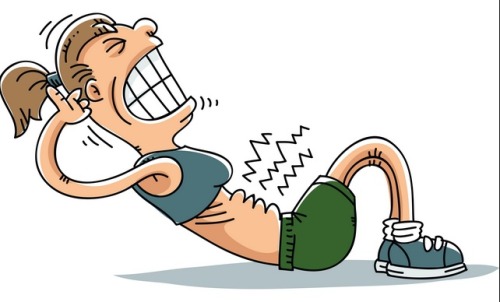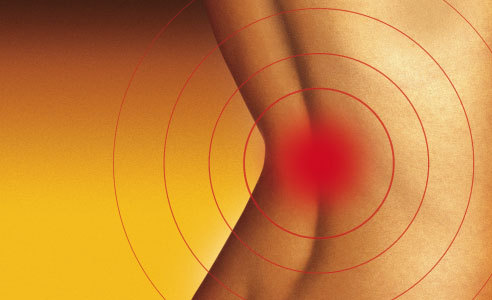http://ylmsportscience.blogspot.co.uk/2015/10/fatigue-physical-performance-mental.html
Author: Robert Manning (Page 8 of 9)
A lot of athletes these days seem to be wearing compression garments on the lower limb. When you ask them ‘why exactly are you wearing this?’ most reply with ‘it helps me perform better! I really notice a difference’
The fact is most scientific literature surrounding this topic of compression garments and performance, have concluded that they have no statistically significant effect.
So, should I bin my compression garments?
The scientific community may not have found a performance increase when using compression garments, but what they have found is that the garments can help in recovery and reduced delayed onset muscle soreness aka DOMS.
The science behind DOMS is still unclear, some theorise that it results from disruption to the muscle fibre and connective tissue and others state that it relates more to the inflammatory response.
How compression garments aid recovery:
- Although speculative, the proposed reason for compression garments helping with DOMS is that the pressure applied by the garments reduces the space the muscles and local tissue has to swell during the inflammatory response lessening the experience of pain.
- The second reason reported by the studies is that the use of the garment dynamically immobilises the area. This enhances the neural input speeding up the recovery time.
- The third reason these garments can help with muscle recovery is due to creatine kinase. This has been used extensively in the scientific community as a marker for muscle damage as it is closely linked with DOMS. The garment is said to act like a pumping mechanism much like sports massage, and help the clearance of metabolites such as CK in turn reducing DOMS.
What needs to be noted is that the paper by Hill, J., Howatson, G., Van Someren, K., Leeder, J., & Pedlar, C. (2014). Compression garments and recovery from exercise-induced muscle damage: a meta-analysis. British journal of sports medicine, 48(18), 1340-1346. they compared a multitude of research papers and there are a few limitations, these being:
- Small sample sizes
- The subjects knew what treatment they were getting meaning placebo effect can’t be ruled out
- The studies have not mention how groups were randomised
- Garments were used on upper and lower body as well as using different manufacturers
- Lastly garments are fitted on height and weight. As people are different shapes it means there maybe difference in pressure exerted.
Now a month or two ago I did a blog post on getting the right amount of sleep, and how too little and too much can affect you in your daily life.
This blog post aims to make you aware of how sleep loss can affect your sporting performance, training and competition plans as well as your daily life
.
1. If your sleep quality is reduced it could result in an autonomic nervous system imbalance, simulating symptoms of the over training syndrome (decreases performance)
2. You are at 1.7 times greater risk of getting injured when you get less than 8 hours sleep
3. The perceptual and motor learning processes continue throughout sleep after a training session, therefore when you don’t get enough this can’t happen
4. Sleep loss can cause your immune system to dysfunction leaving you open to more illnesses
5. Growth hormone, which is needed for tissue regeneration and as the name states growth is released during your phases of deep sleep. This can’t happen as much when you are on less than 8 hours sleep
So there you have it, even more reason to get a good kip!
REMEMBER- ALL MY SESSIONS ARE HALF PRICE FOR JUNE!

For a deeper look into sleep and performance visit http://www.aspetar.com/journal/viewarticle.aspx?id=178#.VXiSZ0bUcZw
A lot of people skip breakfast in the morning, whether it be they want an extra ten minutes in bed or they want to reduce calorie intake. What effect does this have later in the day, when you finish work and go to the gym, training session or even participate in an evening match?
1. If you usually eat breakfast, and end up skipping it the day of a session, in the late afternoon/evening it has been found that your performance can drop by almost 5%.

2. This drop in performance includes if you skipped breakfast but then have a good lunch. Therefore don’t think you can catch up the missed breakfast by having a bigger lunch.
The message is – if you normally have breakfast, try not to skip it if you have a training session or match that evening. What needs looking at with this study is whether the same effects occur with habitual breakfast skippers.
More information
Clayton, D. J., Barutcu, A., Machin, C., Stensel, D. J., & James, L. J. (2015). Effect of Breakfast Omission on Energy Intake and Evening Exercise Performance. Medicine and science in sports and exercise.
Thanks to Livescience.co.uk for the picture
Throughout the whole of June, I am offering half price on all sessions.
This is regardless of whether you have never had a session with me before, or are currently receiving treatment.
This means an hour of massage or injury treatment is only £17.50!
An article I have seen being shared on social media and a few other
places has now shown paracetamol to be an ineffective treatment of lower
back pain and also osteoarthritis.
This study gives further
evidence that musculoskeletal pain shouldn’t be dealt with by having a
few pain killers. Instead it needs to be managed with appropriate
exercises, re-education and advice.
If any of you are struggling with back or joint pain and would like some advice then feel free to give me a call
The aim of the core is to stabilise the spine to create a stiff platform for both the hip and trunk. It prepares the body for loading, and keeps the core, hips and spine stable whilst loaded. When a person has a weak and unstable core, it can lead to developing many issues with the back, hip, knees and feet.
When you hear a lot of people say ‘yeah I just worked on my core today’, they then go onto say I just smashed some crunches or sit ups. This however, is only a small part of a person’s core i.e rectus abdominous. Other essential muscles that make up your core, are transverse abdominis, multifidus, and oblique abdominals.

All of the above muscles have been found to activate before any whole body movements occur. This means they need to be as strong as possible, to be the best platform to allow optimal production, transfer, and control of force during a whole body movement. Think squats, throwing, kicking or even reaching up to a high shelf in a supermarket, all of these movements will need your core engaged.
How do I strengthen these other muscles in my core?
Exercises which can help improve your core, are the plank, side plank and engaging your trans abdominal muscles by doing the abdominal draw. This is achieved by sucking your belly into your spine and still breathing normally. These exercises are a good building block for progressing into more dynamic exercises. The stronger these muscles are, the safer force can be transferred, and the less likely you will be to get injured. Therefore it is a win win situation!
For anyone who is interested the full article is from
Okada, T., Huxel, K. C., & Nesser, T. W. (2011). Relationship between core stability, functional movement, and performance. The Journal of Strength & Conditioning Research, 25(1), 252-261.
Chuter, V. H., de Jonge, X. J., Thompson, B. M., & Callister, R. (2014). The efficacy of a
supervised and a home-based core strengthening programme in adults with
poor core stability: a three-arm randomised controlled trial. British journal of sports medicine, bjsports-2013
Recently I have had people ask me more about LBP (lower back pain)
LBP has been found to be the leading cause of activity limitation and work absence around the globe.
It can last for a couple of days through to a few years, but most cases seem to be sporadic in nature with no set time frame.
Age is the most common factor influencing LBP. Many studies have found the 30 to 40 age group to be the most commonly affected.

Factors which are found to increase the risk of LBP
• stress
• anxiety
• depression
• job dissatisfaction
• low levels of social support in the workplace
There is growing evidence, that some of the above factors can help turn this back pain from an acute issue into a chronic problem.
It isn’t just job dissatisfaction that can cause LBP, but also whether the work is monotonous and how demanding the work is.

The impacts of LBP
Firstly it is painful for the individual, this is a given.
This pain then limits activity.
If you start trying to accommodate the pain by changing your movement patterns, you will do more long term damage.
Muscles that shouldn’t be doing a specific movement take over, and the muscles that should be doing the movement get weaker.
This can then cause a whole host of issues and injuries. The quicker you get treatment, the less likely you are building up bigger problems for the future!



